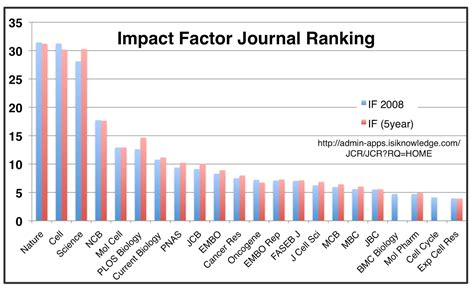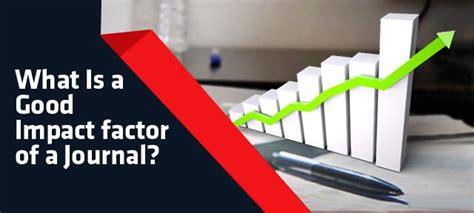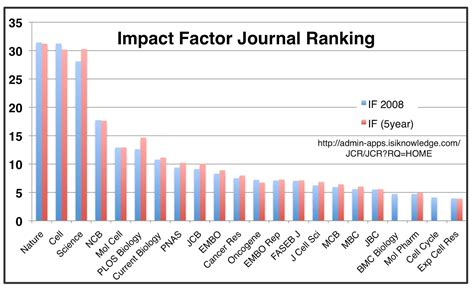Breaking News


Popular News


Learn about understanding, measuring, and improving journal impact factor in this comprehensive guide to advanced science journal impact factors.If you’re involved in the scientific community, you’ve likely heard the term “journal impact factor” thrown around. But what exactly does it mean, and why is it so important? In this blog post, we will delve into the world of advanced science journal impact factors, exploring everything from understanding the concept to interpreting trends and improving the impact factor of a journal. We’ll discuss the various factors that influence a journal’s impact factor, as well as the importance of accurately measuring this metric. Whether you’re a researcher looking to publish your work or a journal editor aiming to increase the reach and influence of your publication, understanding impact factor is crucial. So, buckle up and join us on this journey as we uncover the ins and outs of advanced science journal impact factor.
Contents

Impact factor is a metric used to evaluate the importance of a journal within its field. It is calculated by dividing the number of citations in the current year to articles published in the previous two years by the total number of articles published in the previous two years. This metric is widely used to compare the relative importance of journals within a specific field.
There are several factors that can influence the impact factor of a journal. These factors include the number of articles published, the quality and significance of the research, the size and influence of the target audience, and the frequency and recency of citations. Understanding these factors is essential for journal editors and researchers to improve the impact factor of their publications.
Measuring impact factor accurately is crucial for accurately representing the influence and significance of a journal within its field. It is important to consider the quality and diversity of the research published, as well as the reputation and standing of the journal in the academic community. Additionally, it is important to take into account the potential biases and limitations of impact factor measurements in order to accurately assess and interpret the data.
Interpreting impact factor trends can provide valuable insights into the performance and influence of a journal over time. Analyzing changes in impact factor can help researchers and journal editors identify strengths and weaknesses in their publication strategies, as well as understand the evolving needs and interests of their target audience. It is essential to carefully analyze and interpret impact factor trends in order to make informed decisions about the direction and focus of a journal.

Factors Influencing Journal Impact
Factors Influencing Journal Impact
When it comes to understanding the impact factor of a journal, there are several key factors that play a crucial role in determining its influence within the scientific community. One of the most important factors is the quality and relevance of the research published in the journal. High-quality, groundbreaking research is more likely to be cited by other researchers, thus increasing the journal’s impact factor.
Another influential factor is the reputation of the journal and its publishers. Journals published by well-respected, established academic publishers are often viewed as more credible and trustworthy, leading to higher impact factors. Additionally, the size and reach of the journal’s audience can also impact its influence. Journals with a larger readership and broader international reach are more likely to attract citations and increase their impact factor as a result.
Moreover, the frequency of publication and the timeliness of the research are important factors that can influence a journal’s impact factor. Journals that publish more frequently and stay up-to-date with the latest developments in the field are more likely to attract attention and increase their impact factor over time.
Overall, it’s important for journal publishers and editors to consider these various factors and strive to publish high-quality, timely research that will attract a wide readership and garner citations from other researchers, ultimately increasing the journal’s impact factor and solidifying its status within the scientific community.

Impact factor is a key metric used to evaluate the importance of a journal within its field. It is a measure of the average number of citations received per paper published in a particular journal during a specific time period. Measuring impact factor accurately is crucial in determining a journal’s influence and prestige within the scientific community.
When calculating the impact factor of a journal, various factors need to be taken into consideration. These include the number of citations, the publication frequency, and the source of the citations. Additionally, the data used for impact factor calculations should be accurate and up-to-date, in order to provide a true reflection of a journal’s impact within the scientific community.
Utilizing journal impact factor tables can be helpful in accurately measuring the impact factor of a journal. These tables provide a comprehensive overview of a journal’s citations, publications, and other important metrics, allowing for a more thorough assessment of a journal’s impact factor. Additionally, using impact factor trends and analysis can help in measuring a journal’s impact factor accurately over time.
Overall, accurately measuring the impact factor of a journal is essential in assessing its influence within the scientific community and determining its standing within its field. By considering various factors, utilizing impact factor tables, and analyzing trends, researchers and publishers can gain a better understanding of a journal’s impact factor and its significance within the scientific community.

When looking at the impact factor trends of a scientific journal, it is important to understand the various factors that can influence these trends. Impact factor is a measure of the average number of citations received per paper published in a particular journal during a specific time period. The impact factor of a journal can be influenced by factors such as the quality and significance of the research published, the size and scope of the journal’s readership, and the citation culture in a particular field of study.
It is important to interpret impact factor trends in the context of these influencing factors. For example, a journal’s impact factor may increase if it attracts high-quality research papers that are widely cited, or if it expands its readership and visibility within a particular field. On the other hand, a decrease in impact factor could be due to a decrease in the quality of published research, or changes in citation patterns within the field. Therefore, it is crucial to consider the broader context of a journal’s impact factor trends before making any conclusions about the journal’s standing within the scientific community.
One way to measure impact factor accurately is to analyze the citation data for a journal over a longer time period, rather than just focusing on short-term trends. This can provide a more comprehensive view of the journal’s impact within its field, and help to identify any long-term patterns or fluctuations in impact factor. In addition, it is important to compare a journal’s impact factor to that of other journals within the same field, in order to gain a clearer understanding of its relative standing and influence.
Overall, it is essential to approach the interpretation of impact factor trends with a critical and analytical mindset. By considering the various factors that can influence impact factor, and taking a broader and longer-term view of the data, researchers and scientists can gain a more accurate understanding of a journal’s impact and significance within the scientific community.

Improving Journal Impact Factor
In the competitive world of academia, having a high journal impact factor is crucial for the success and recognition of a scientific publication. The impact factor is a measure of the average number of citations received per paper published in a particular journal during a specific time period. It is widely used as a tool to evaluate the relative importance of a journal within its field. Therefore, it is important for journal editors and publishers to constantly strive to improve their impact factor in order to attract top-quality submissions and increase their visibility and influence in the scientific community.
There are several key factors that can contribute to improving a journal’s impact factor. First and foremost, the quality of the content published in the journal plays a crucial role. High-quality, original research that is of interest to a wide audience is more likely to be cited by other researchers, ultimately boosting the impact factor of the journal. Additionally, the editorial policies and peer review process of the journal also play a significant role in determining its impact factor. Ensuring a rigorous peer review process and maintaining high standards of publication ethics can help to attract high-impact research and enhance the reputation of the journal.
In order to improve their impact factor, journals should also focus on effectively promoting their content and engaging with the scientific community. Utilizing social media and other digital platforms to disseminate articles and connect with researchers can help to increase the visibility and influence of the journal. Furthermore, collaboration with other journals, academic institutions, and organizations can also be a valuable strategy for boosting impact factor. By forming partnerships and collaborations, journals can increase the reach of their content and attract a wider audience, ultimately leading to an increase in citations and impact factor.
| Factors Influencing Journal Impact | Measuring Impact Factor Accurately | Interpreting Impact Factor Trends |
|---|---|---|
| Content Quality | Citation Analysis | Long-term Trends |
| Peer Review Process | Publication Frequency | Field-specific Factors |
| Promotion and Engagement | Article-level Metrics | International Collaboration |
In conclusion, improving a journal’s impact factor requires a multi-faceted approach that focuses on content quality, editorial policies, promotion, and engagement with the scientific community. By implementing strategies to attract high-impact research, increase visibility, and foster collaborations, journals can enhance their influence and reputation within the scientific community, ultimately leading to a higher impact factor.

The impact factor of a scientific journal is a measure of the frequency with which the 'average article' in a journal has been cited in a particular year or period. It helps to evaluate the relative importance of a journal within its field.The impact factor is calculated as the number of citations in year 2 to content published in years 1 and 2, divided by the number of citable items in years 1 and 2. The citable items are usually articles and reviews, but not editorials and letters to the editor.A good impact factor for a journal varies by discipline. Generally, impact factors above 10 are considered very good, while those below 1 are often not considered as influential.The impact factor is important because it can be used as a proxy for the relative importance of a journal within its field. It also helps researchers and academics decide which journals they should submit their work to.The prestige and size of a journal, as well as the type of articles it publishes, can affect its impact factor. Self-citations and citation cartels can also artificially inflate the impact factor of a journal.Yes, the impact factor can be manipulated to some extent. This can be done through self-citations, encouraging authors to cite papers from the same journal, or splitting articles to increase the count.Yes, there are various alternative metrics such as the Eigenfactor score, h-index, and Altmetrics. These metrics offer different perspectives on journal impact and can be used in conjunction with the impact factor.